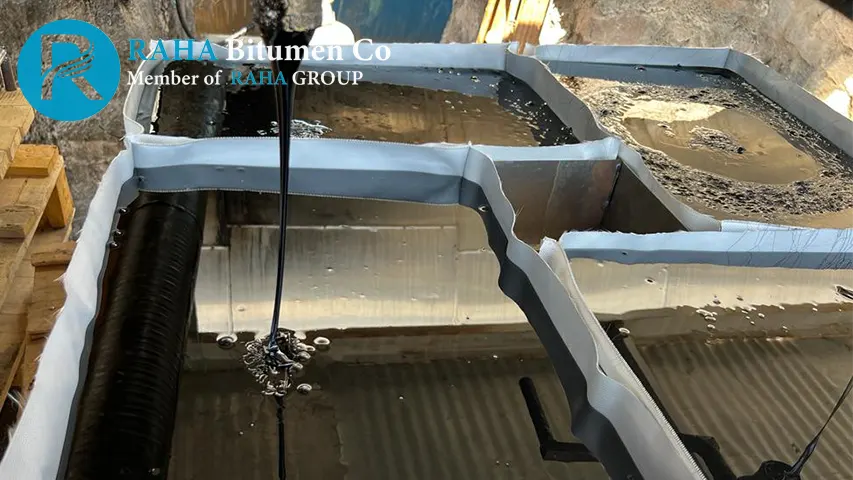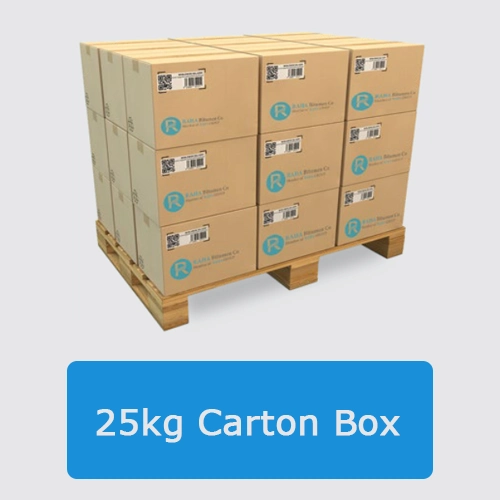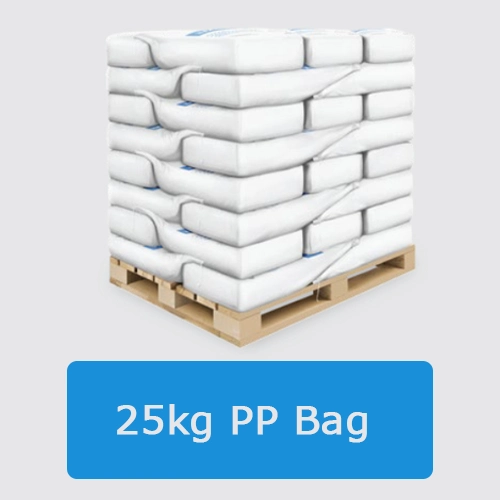
Introduction
Oxidized Bitumen is a type of bitumen that is obtained from blowing air to the pure bitumen.
at the final stage of the purification operation In this process, hot air with a temperature of 200 to 300 degrees Celsius is blown through a perforated tube into a compartment containing bitumen.
Oxidized Bitumen Description
As a result of this process, the hydrogen atoms in the bituminous hydrocarbon molecules are combined with air oxygen and the polymerization takes place with the formation of water
This process gives the bitumen more rubbery properties than its original formula and they are simply harder bitumen. It has a lower penetration grade and more softening point in comparison to pure bitumen.
Based on its softening point and penetration grade, it is classified into three types low, medium, and hard oxidized bitumen.
Oxidized bitumen’s properties can be adjusted based on the blowing duration, temperature, and air pressure during the manufacturing process.
Some of the major advantages of Oxidized Bitumen are that it is completely water resistant, highly flexible, and durable. Further, it is chemically very stable. Lastly, Oxidized Bitumen has some very prominent technical advantages that make it a very sought-after compound in various applications.
Oxidized Bitumen Other Name
Oxidized bitumen is known by various alternative names or terms depending on regional or industry-specific usage. Here are some common alternative names for oxidized bitumen:
- Blown Bitumen
- Air-Blown Bitumen
- Air-Refined Bitumen
- Oxidized Asphalt
- Blown Asphalt
- Hard Bitumen
- Industrial Bitumen
- Air-Cured Bitumen
- Heat-Refined Bitumen
- Oxidized Asphalt Cement
It’s important to note that while these terms may refer to the same or similar products, there can be slight variations in manufacturing processes, specifications, or properties based on regional or industry-specific practices.
The best Applications of Oxidized Bitumen
- Air-blowing: The manufacturing process used to make oxidized roofing asphalts in which air is blown through an asphalt flux. An exothermic oxidation reaction occurs, yielding an asphalt that is harder, more viscous, less volatile, and less temperature-susceptible than the asphalt flux used as the feedstock to the process.
- Asphalt, oxidized (blown or air-refined) (CAS number 64742–93–4): Asphalt is treated by blowing air through it at elevated temperatures to produce the physical properties required for the industrial use of the final product. Oxidized asphalts are used in roofing operations, pipe coating, undersealing for Portland cement concrete pavements, hydraulic applications, membrane envelopes, some paving-grade mixes [AI 1990b], and the manufacture of paints [Speight 1992].
- Blowing still: A closed-process vessel fitted at its base with a sparer and used in the air-blowing process to make many types of roofing asphalt.
- Coating asphalt: An air-blown or oxidized asphalt used to manufacture roofing materials used in a variety of roofing systems such as asphalt shingles, polymer-modified bitumen roofing, reinforcing and underlayment felts, and roll roofing products.
- Modified bitumen: A roofing system based on membranes manufactured by impregnating or coating one or more fabric plies with a straight-run or oxidized asphalt modified using a polymer, usually atactic polypropylene (APP) or styrene-butadiene-styrene (SBS). Modified bitumen systems may be torch-applied or installed by adhesion in hot asphalt or a cold-applied, solvent-based asphalt adhesive (cutback asphalt). Modified bitumen systems are used on low-slope (primarily commercial or industrial) roofs.
Oxidized Bitumen Uses
- As a bonding bitumen for roofing sheet membranes.
- As a hot applied waterproofing layer.
- Carpet tile manufacture.
- As a raw material for liquid bitumen coatings.
- For production of bituminous pains, mastic.
- For rust-proof pipe coatings.
- Used as an anti-slip layer compound in the piling industry.
Used for producing roofing and sound-dampening felts, Used as under carriage sealant in the automobile industry, electric cable joint protection, joint filling compound, sealant compound, and many more in our day-to-day life.
Some important differences between bitumen and oxidized bitumen
Bitumen and oxidized bitumen, while closely related, have distinct characteristics that set them apart in terms of production, properties, and applications.
Bitumen is either naturally occurring or produced as a residue from petroleum distillation, while oxidized bitumen is created by blowing air through heated bitumen. This production difference leads to significant changes in their chemical composition, with oxidized bitumen containing a higher proportion of polar and aromatic compounds due to the oxidation process.
The oxidation process imparts several key property differences between the two materials:
- Oxidized bitumen typically has a higher softening point and lower penetration value, making it harder and more heat-resistant than regular bitumen.
- exhibits improved weather resistance, better adhesion properties (especially to mineral surfaces), and higher viscosity at elevated temperatures.
Due to these property differences, bitumen and oxidized bitumen find themselves used in different applications. Regular bitumen is primarily used in road construction and paving due to its softer consistency and lower cost. On the other hand, oxidized bitumen is commonly employed in roofing, waterproofing, and specialized industrial applications where increased durability, weather resistance, and heat stability are required. While oxidized bitumen tends to be more expensive due to additional processing, it often provides superior performance in these demanding applications, justifying the higher cost.
Packing of Oxidized Bitumen Grades
Oxidized Bitumen in various packing, including Oxidized bitumen is available in 20 & 50 Kg Kraft Paper Bags / Poly Amide Bags, 25 Kg Carton boxes.
Major of Oxidized Bitumen Packings
25kg Carton Box- Palletized and Shrink
Wrapped:
- Loading 880 Carton Box in 20ft Contai-
ner= 22 Ton Net

25kg PP Bag- Palletized and Shrink
Wrapped:
- Loading 920 Bag in 20ft Container= 23
Ton Net

Handling and Storage
Proper handling and storage of Oxidized Bitumen are crucial for maintaining quality and safety. Store in a cool, dry, and well-ventilated area away from heat and open flames. Handle with appropriate protective gear and avoid overheating or exposure to ignition sources.
In Summary
Oxidized bitumen is a specialized form of bitumen produced by blowing hot air through pure bitumen at temperatures between 200 to 300 degrees Celsius. This process alters the chemical structure of the bitumen, resulting in a material with enhanced properties such as increased hardness, higher softening point, and improved water resistance. The characteristics of oxidized bitumen can be fine-tuned by adjusting the blowing duration, temperature, and air pressure during manufacturing, making it adaptable to various industrial needs.
The applications of oxidized bitumen are diverse and widespread. It is commonly used in roofing operations, pipe coating, waterproofing, and the production of bituminous paints and mastics. Its superior properties make it ideal for specialized uses such as undersealing for concrete pavements, manufacturing carpet tiles, and as an anti-slip compound in the piling industry. Oxidized bitumen is also utilized in the automobile industry for undercarriage sealants and in electrical applications for cable joint protection.
When compared to regular bitumen, oxidized bitumen exhibits distinct advantages that justify its higher cost in certain applications. It offers greater durability, improved weather resistance, and enhanced heat stability, making it particularly suitable for roofing and waterproofing projects. While regular bitumen is primarily used in road construction due to its softer consistency, oxidized bitumen finds its niche in more demanding industrial applications where its superior performance characteristics are essential. Proper handling and storage of oxidized bitumen are crucial to maintain its quality and ensure safety during use.


